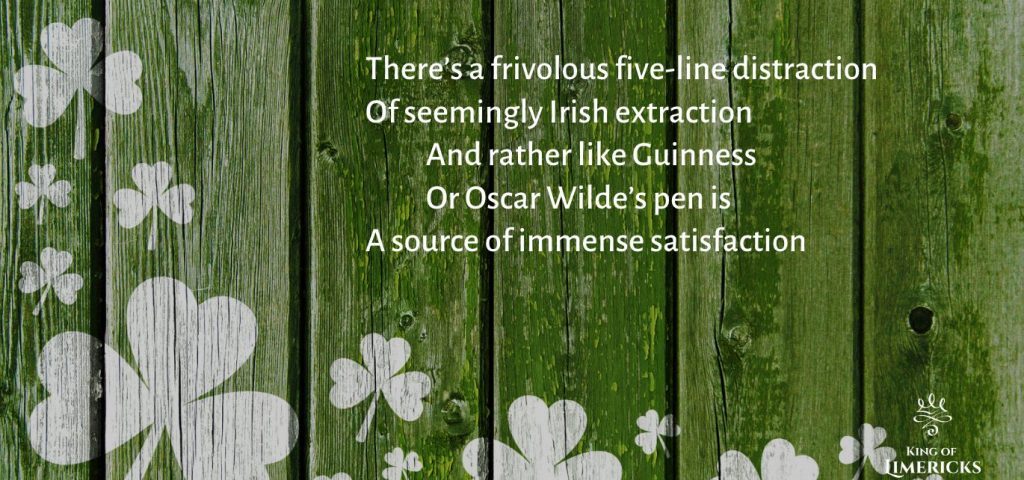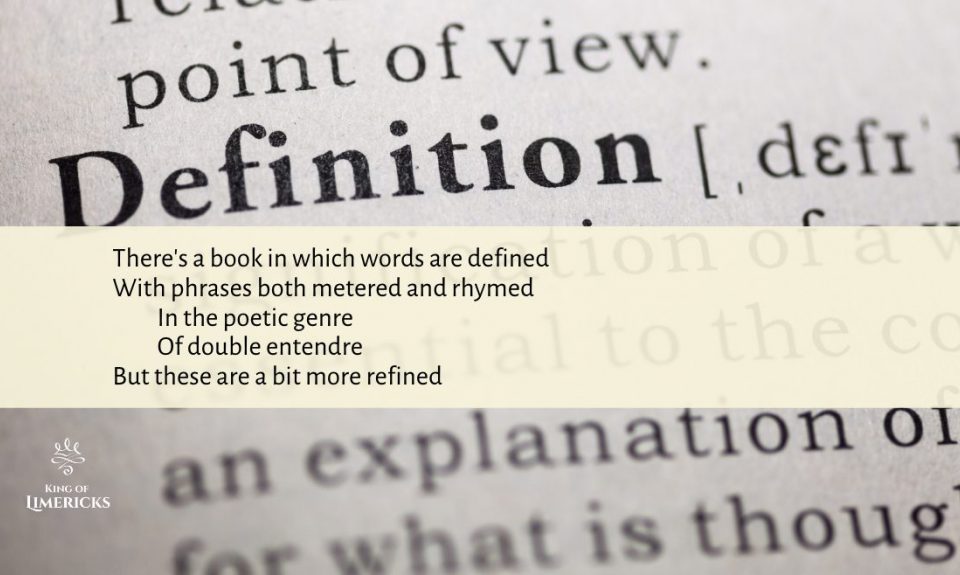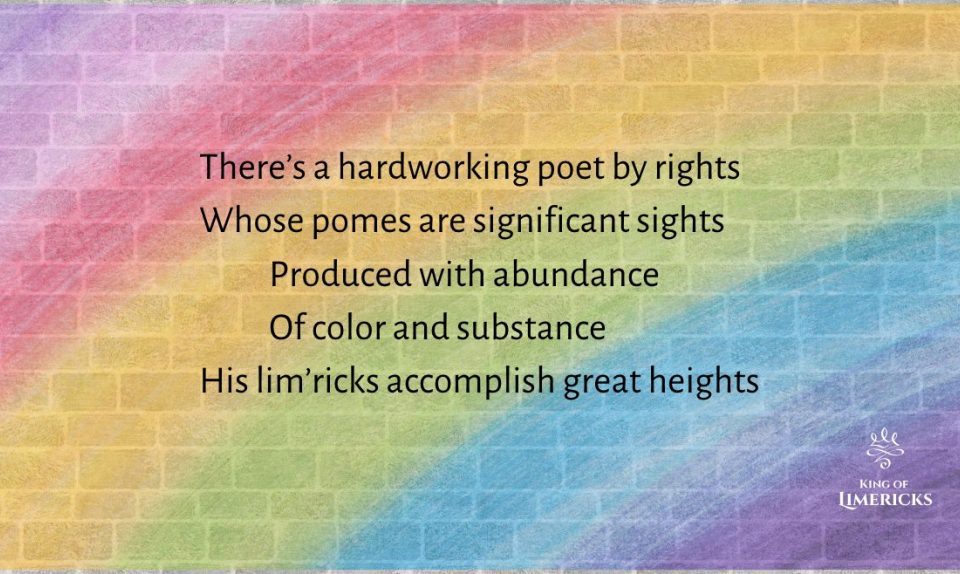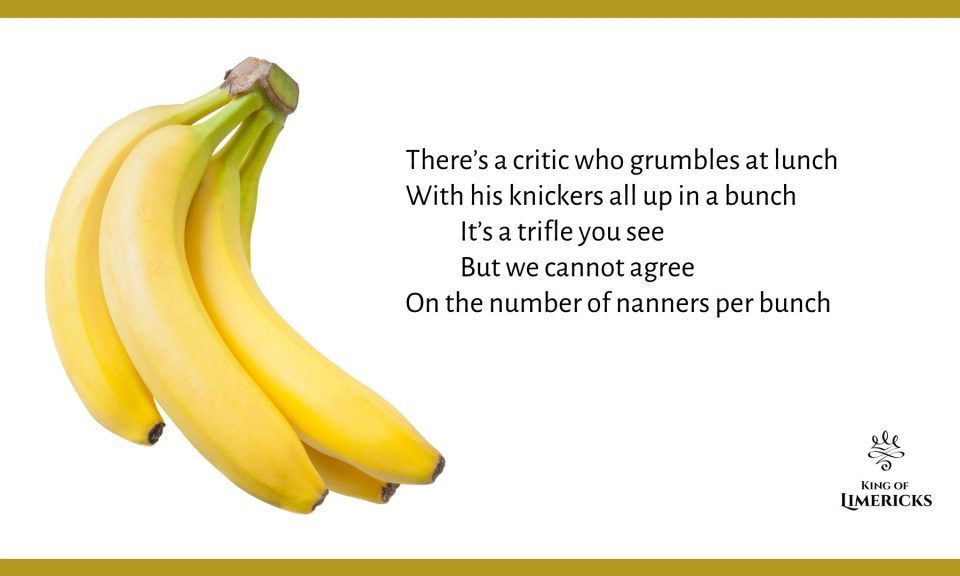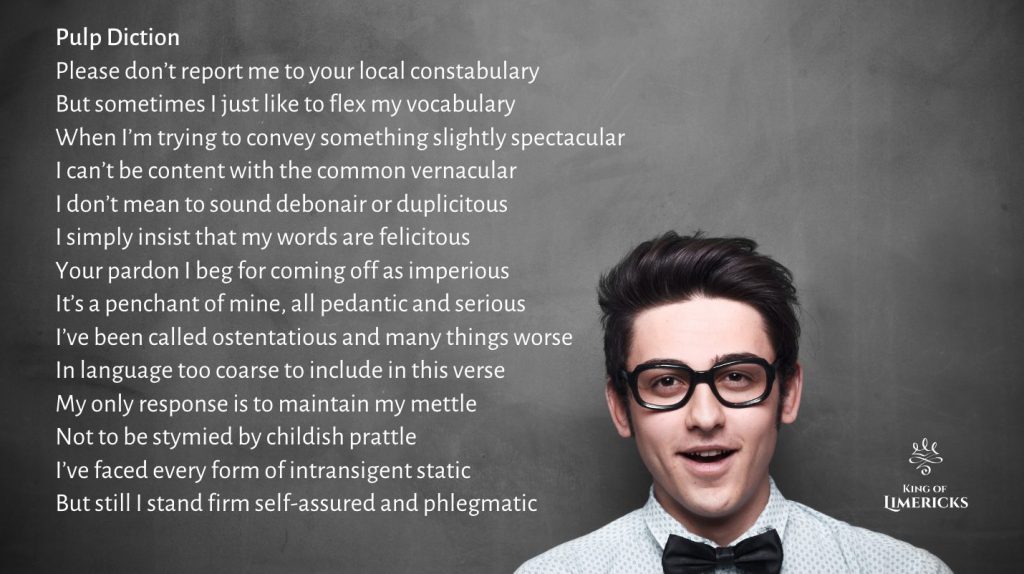
Highfalutin Limericks: Nerd alert

Pandemic Poetry: A year to remember
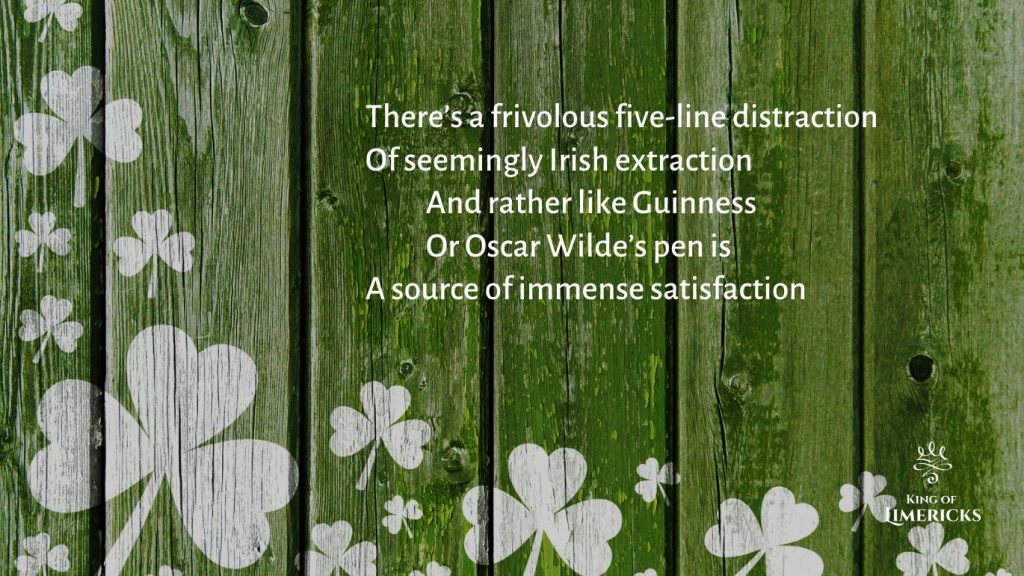
It’s almost safe to assume that the poetic form known as the Limerick is an Irish invention, given the fact that Limerick is the name of a county and a city in Ireland. But not unlike the Leprechaun who’s famously short-sided, this assumption is a wee bit short-sighted. Of course, if you happen to be putting away pints of Guinness in an Irish bar alongside a fellow who goes by the name Mickey the Mauler, and he insists that the limerick is purely a product of Ireland, then take my advice and let him have his way. But if you’re engaged in a more sober discussion among scholars and academics, you might take a more forceful position.
The five-lined, rhyming poem we now know as the limerick was originally made famous by a 19th century Englishman named Edward Lear (1812-1888), who was also an accomplished musician and illustrator. Mr. Lear had no connection with Ireland. By the turn of the 20th century, sometime after Lear’s death, poets and ruffians across the British isles had taken up the form and run with it. Irishmen certainly embraced the limerick at this time, but they did not invent it. More accurately, we might credit the Irish with re-inventing the limerick.
The Irish Literary Renaissance
The final decade of the 19th century, which, by coincidence, immediately followed the death of Edward Lear, was a time of great cultural and political exuberance on the island of Ireland. It was a time stirring nationalism, leading up to Irish independence, or Home Rule, which finally went into effect in 1921. Artists by nature, the Irish had no better way of expressing their nationalist sentiment than by flexing their literary muscle.
The Irish Literary Revival, or what William Butler Yeats would call the Celtic Twilight, includes such noteworthy poets and wordsmiths as Yeats, John Millington Synge and Lady Gregory, to name just a few. We might also associate this movement with names like Oscar Wilde (1854-1900) and George Bernard Shaw (1856-1950).
The history of the limerick and its connection with Ireland remains clouded by speculation, but our best guess is that some writers from this period first assigned the name limerick to this popular genre. By doing this, they were able to create an implicit — albeit misleading — association between the five-line rhyme and the Maigue Poets of the previous century, who famously congregated in Croom, in the County of Limerick.
The Irish bring Limericks to life
Although Edward Lear probably deserves credit for developing the poetic morsel we call the limerick, it seems to have been the Irish who really made the limerick what it is today. Lear specialized in children’s literature, writing whimsical volumes like the Book of Nonsense. He maintained the classic rhyme and meter which remain a defining characteristic, and they were often humorous. But Lear’s poetry lacked the off-color flavor for which limericks are now notorious.
A Limerick of Lear’s, for example:
There was an Old Man with a beard,
Who said, “It is just as I feared!—
Two Owls and a Hen, four Larks and a Wren,
Have all built their nests in my beard.
Yes, there’s a twinkle of wit. But compared to some better-known limericks of a later era, Lear’s rhymes seem to lack a certain edginess. For the last 100 years, we’ve come to expect something more from a limerick, something more ribald and provocative.
Therefore, perhaps we can credit the Irish with reinventing the limerick, even if they didn’t invent it outright. They seem to have left a salacious stamp on it anyhow, and that’s something any Irish person can be proud of.
The indecent limerick really isn’t my specialization, but every now again, I have to take a stab at it, just as a matter of tradition.
There’s a frivolous five-line distraction
Of seemingly Irish extraction
And rather like Guinness
Or Oscar Wilde’s pen is
A source of immense satisfaction
Post-prurient limericks
In the contentious age of cancel culture, we might wonder if the dirty and often misogynistic limerick of the Irish persuasion is not a poetry form overdue for retirement. And at the risk of never being invited to another limerick festival, allow me to be the first to say yes. Yes, we’ve had enough lascivious limericks to last a lifetime.
The future I envision is one in which metaphysical limericks expand our human consciousness, bridging the gap between the sacred and the profane, between the cryptical and the whimsical. If that sounds too strange to be true, just think of it like rhyming Viagra for your spiritual rectitude.
Further Reading
If you enjoyed this explication of Irish limericks, please consider sharing the post or subscribing to the blog. You might also want to check out some of these popular articles:

